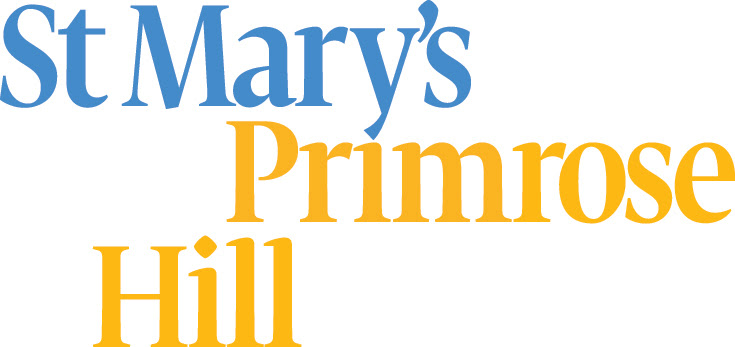SERMON FOR CHRIST THE KING - YEAR C - 24.11.19
By Miriam Rinsler
Be still then, and know that I am God - Father, Son and Holy Spirit.
It’s some years since I first came to this church. At the time, there were many things that caused me wonder: the beautiful music, the freedom that chairs give you and pews don’t, the presence of women and children on the altar. When I got more used to some of these things, I began to notice the image on the rood screen, which has grown on me over the years but still gives me pause. You have a copy on your service sheet to take home. Take a good look for a moment.
At first I was puzzled, then I began to see that this was the resurrected Christ, who is not only crucified, but risen and raised to sit at the right hand of the King of Heaven. We are meant to see all of these things at once.
To show Christ clothed on the cross is not so unusual, but usually his robes are that of a priest, rather than a simple white gown. What we have on our rood screen is not so much our high priest, but Christ the victim and victor. All those splendid and entwined images that Paul uses to bring out the ways in which Christ both fulfils prophecy and redeems us. The ways in which Christ is both human and divine. The ways in which the aching stretch of the cross becomes for us an embrace wide enough for the entire creation. Even me. Even you.
This is Jeremiah’s Lord, who is our righteousness. This is the battered man who prays for the soldiers who crucified him to be forgiven. When shown crucified and clothed, He always has nails, He always has a crown. This is our King. Take another look.
He is both glorified and exhausted by pain. He has the strength that comes from his glorious power and he endures everything with patience. All the things we know about Jesus Christ, exist in our minds and hearts superimposed on each other.
Some months ago, the ministry book club read a book on the Crucifixion by Fleming Rutledge. She goes into all the theories about what Christ was doing for us on the cross in helpfully clear detail. Her thesis, despite the learned detail, is helpful: just as we need the different versions of the Gospel to provide a filled-out understanding of Jesus, so the different theories of his work on the cross are necessary to give us a filled-out understanding of what we have been given and forgiven. It is when we lean too heavily on one theory, that we distort our understanding of God.
For instance, we are told clearly by Paul that our peace is made through the blood of the cross. It’s easy to see how, from this image, came the idea of Jesus as ransom, paying the blood price to a vengeful, angry God who needed to be bought off. Quite simply, taken to its logical end, this splits the Trinity apart. The persons of the Trinity are entwined in love: if we make two of them permanently into a cracked version of a father-son relationship, we lose the love, we lose the Spirit, we have no Trinity and our faith becomes a glorification of anger and violence. Again, taken to another logical end, if our God can be bought off by sacrifice (even his own) - if he can be affected in any way by us - then He is much less than the One, the Creator of all things out of nothing, who has no need of us but brought us into being out of his overflowing bounty of love.
Both of these exaggerations make God in our own image. They might be easier to understand because we recognise them only too well, but essentially, they put us at the centre of the universe, a kind of negative idolatry. What the overlays of four Gospels do, what the overlapping understandings of Christ’s work do, is prevent that idolatry. Because the coexistence of perfect love with suffering, of justice with self-offering sacrifice, of a crucified majesty - all the paradoxes of the Cross - because they blow our minds, fuse our rationality, they throw us out of our self-centred making of heaven and earth in our own image. They turn us inside out so that the God we tend to set at the very edge of our existence - safely out of sight and out of mind - ends up at our core.
This image is designed to be taken to heart. The majestic welcome, the nailed man, the crown, the aching stretch, the enormity of the power and the love. This is Christ our King, with whom, today, we can be in Paradise. This is Christ our King who has won for us a glorious victory over sin and death. This is Christ our King who has come to have first place in everything. The very least we can offer him, once we have let this image turn them inside out, is first place in our hearts.
Amen.
